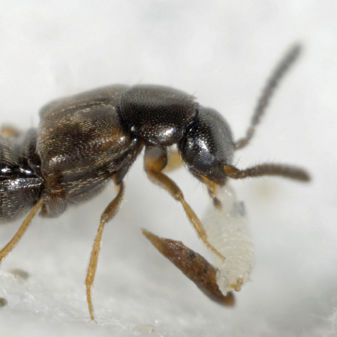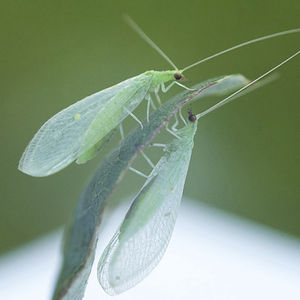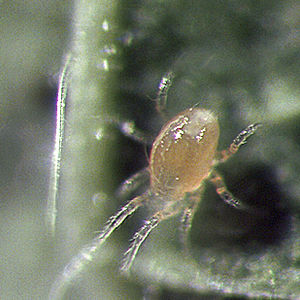
- Seeds and crop inputs
- Crop input
- Against fly beetle
- Beneficial Insectary Inc

- Products
- Catalogs
- News & Trends
- Exhibitions
Against fly beetle DALOTIAforce™against Thrips
Add to favorites
Compare this product
Characteristics
- Target
- against fly, against Thrips
Description
Dalotia (formerly Atheta) coriaria, also known as the rove beetle, is used for the control and management of shore flies (Scatella spp, Ephydridae spp), several species of sciarids (fungus gnats) such as Lycoriella spp, Sciara spp, Bradysia spp. and Mycetophilidae family members, thrips pupae (species like Frankliniella occidentalis also known as Western flower thrips), F. tritici a.k.a. flower thrips, and others which drop to the substrate to pupate, springtails (Collembola family members) and moth fly larvae (Psychodidae family).
Life-style
Dalotia coriaria is a 1/8th in., fast moving, soil-dwelling predatory beetle known for its aggressive feeding behavior. This beetle spends most of it’s time in the substrate but they can also fly. The eggs take 3-4 days to hatch into predacious larvae, which look somewhat similar to the adults. They pupate in silken chambers. Altogether they live for about 21 days at 70°F. They are effective at a wide range of temperatures of between 55-95°F.
They have a wide range of dietary options at their disposal and can quickly react to differing pests without much of a problem. Due to their ability to colonize rapidly, react is an apt word. Their populations should mirror those of their prey after establishment. Being opportunistic, their numbers may stay fairly high in an area such as a greenhouse with a gravel floor or raised beds, or a garden with lots of organic matter. This is definitely a good thing as it may allow for more infrequent releases.
Release Rates
Use at a rate of 0.5 per sq. ft. Dose may be increased to 1 per sq. ft. to speed up establishment in areas of high infestation, particularly of shore flies.
*Prices are pre-tax. They exclude delivery charges and customs duties and do not include additional charges for installation or activation options. Prices are indicative only and may vary by country, with changes to the cost of raw materials and exchange rates.





